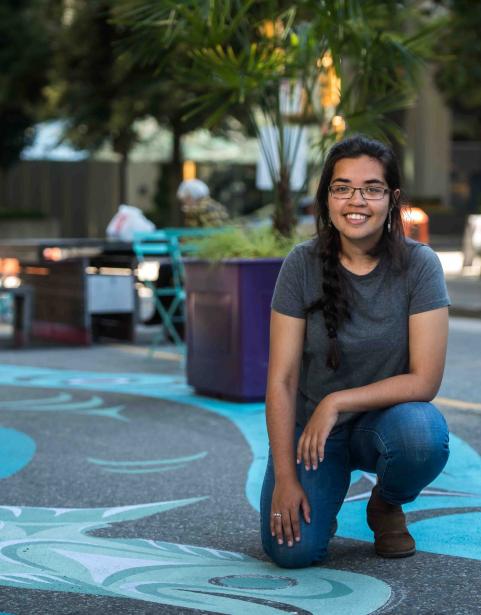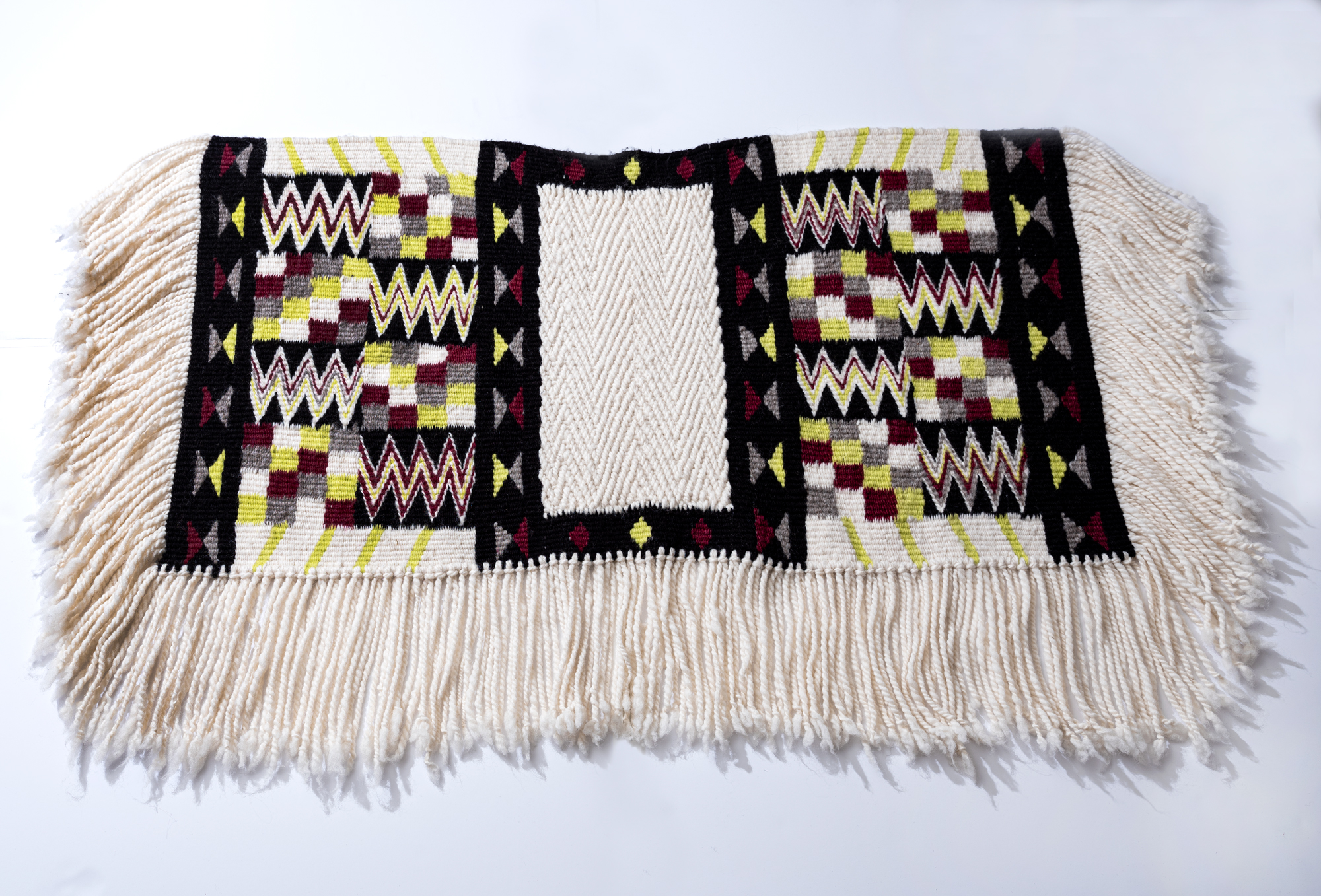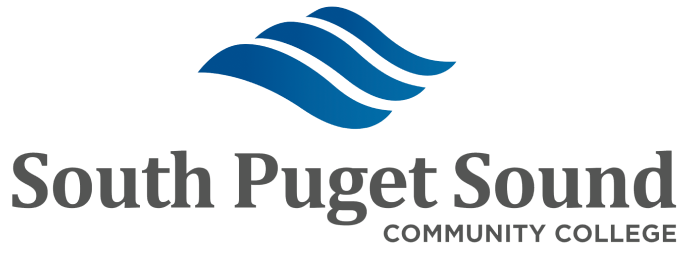Atheana Picha is a Salish artist from The Kwantlen First Nation. Atheana was given the name Nashmenetanaht by Gerry Oleman from The St’at’imc Nation, which means “Go-Getter Woman”.
Born in Vancouver, she grew up and currently works out of Richmond, BC. She is an interdisciplinary artist, working mostly in 2-dimensional work. Picha is currently doing two apprenticeships, learning Salish wool weaving from Musqueam weaver Debra Sparrow, and learning wood carving and silver engraving from Squamish artist and educator Aaron Nelson-Moody. Her work is grounded in learning more about Salish design through studying the old pieces, observing nature, and learning from her teachers.
Atheana studied fine art at Langara College for three years, with a focus on ceramics, intaglio printmaking, and wood carving, and is currently learning screen printing. Atheana is engaged with public art through her mural work throughout the Vancouver area since 2018. Atheana is a two-time recipient of The YVR Art Foundation Emerging Artist Scholarship and has works in the collections at The Museum of Vancouver, Burnaby Art Gallery, and Bill Reid Gallery of Northwest Coast Art.
Excerpts from a conversation between the artist Atheana Picha, Debra Sparrow, and the curator on September 16th, 2022
I’ve been weaving for about two years now. Mostly smaller blankets for now, mostly because they’re faster, and babies need regalia too. Baby blankets, child blankets, and things. Between projects, I find weaving is really refreshing for me, all the processes from splitting the wool, roving the wool, spinning it, then shocking it, or dyeing it. Then finally getting to weave with it.
I’ve been working with Debra Sparrow for, I guess, three years. I met her when I was at Langaran when I was in their fine arts program. It was right before the pandemic, so we never actually got to finish the class, but I was asked by my Nation to learn wool weaving on behalf of the Nation to then go on and teach wool weaving. I’ve done a couple of workshops so far, with more down the road. I like working on different looms, so hopefully, we can make some different looms and then work from there. It's been awesome working with Debra. I really like working one-on-one with people because you learn more than just the technical skill. You learn the history and how to hold yourself as a weaver. How weavings represent our people it’s more than just a “thing.” It's literally the foundation of our culture. You put blankets down and then do the work, so it's quite literally the foundation. How you honor people as well, you know blanketing ceremonies are a cornerstone of Salish culture, how we hold each other up. It's really an honor to be weaving with someone who is so well researched as well, she’s constantly asking elders about weavings, how we made them historically, what we do now, and I hear lots of stories from her Grandfather. It is always awesome to hear little anecdotes from him. Someone was telling us that he was really quiet regal and when I heard that I thought, that's exactly how I imagined him. I never got to meet him. But he held so many old teachings, and having those teachings trickle down to this unbroken chain is really amazing. When people ask, “how did you learn to weave,” and I say, “well, I learned from Debra,” but I also learned, I guess, from her grandpa, you know. It's a bigger thing; it's amazing getting to work with someone who, you know, we both don’t focus on it being about me. It's the Salish culture. We’re just the hands that are doing it. We’re born at the right time, have the right loom; it just happens to be things lining up for us.
Debra Sparrow chimes in, “we’re the hands of our ancestors”



